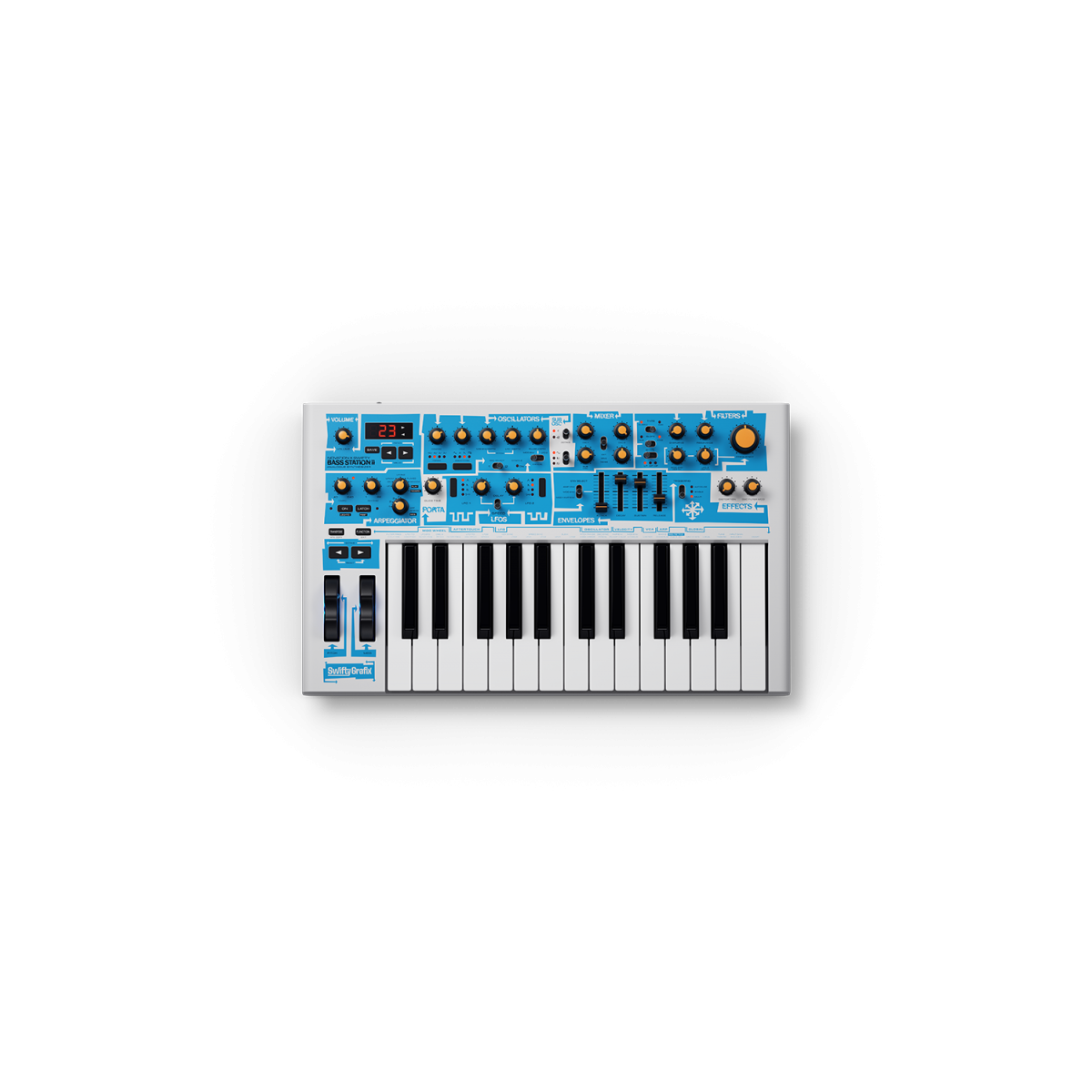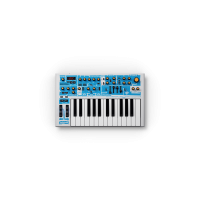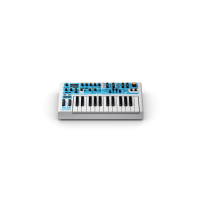- Studio & Recording
- Live Sound
- Room Acoustics
- Software & Plug-ins
- Guitars
- Bass
- Keyboards & Synthesizers
- Microphones
- Drums & Percussion
- DJ Equipment
- Accessories
Novation Bass Station II Swifty Edition
Product Code:
Availability:
Availability:
Novation Bass Station II Swifty Edition
Pre-Order
Pre-Order
Hardware & controller assignment
25 note synth-action keyboard
Aftertouch can be assigned to modulate:
Filter frequency
LFO 1to Osc pitch
Osc 2 speed
Pitch wheel
Modulation wheel can be assigned to:
LFO 2 to filter frequency
LFO 1 to Osc pitch
Osc 2 pitch
Octave up/ down buttons
64 factory presets
64 slots for user patches (and patch dump facility for storing more)
Master volume dial
Inputs and Outputs
USB 2 socket for MIDI (for connecting & powering Bass Station II via host computer)
Mono output on 1/4' TRS jack
Headphone output on 1/4' TRS jack
External input on 1/4' TRS jack
Sustain pedal input on 1/4' TS jack
MIDI IN / MIDI OUT ports on 5 pin din
DC power input
Switch between power off / DC powered / bus powered
In the 1990s and early 2000s, as genres like hip hop, electronica, house, techno, jungle, acid jazz, and various global fusion styles surged into
underground and mainstream consciousness, graphic design became a key tool in shaping how these sounds were seen, not just heard.
This era saw a democratization of both music production and visual culture, with independent labels, club nights, and pirate radio stations relying
heavily on DIY aesthetics, bold typography, and experimental layouts to communicate their ethos.
In the electronic world, labels like Mo’ Wax, Ninja Tune and Talkin’ Loud fused acid jazz and trip-hop with record sleeve designs that evoked both
crate-digging sophistication and street-level cool.
Club culture relied on graphic codes — day-glo colors, distorted text, abstract forms — to mark out spaces of hedonism, rebellion, or spiritual
communion. In world music fusions, design often walked a line between celebration and exoticization, reflecting both the hybridity and tension of
cross-cultural collaboration. Across these genres, graphic design was not merely decoration; it was integral to storytelling, identity formation, and the
sensory architecture of evolving music culture
Since its release in 2013, the Novation Bass Station II has cemented itself as a modern classic in analogue synthesis. A staple in studios and live setups
for over a decade, it delivers deep sound design capabilities, raw character, and unbeatable value. Now, this modern classic gets a bold new look,
courtesy of Ian ‘Swifty’ Swift — the visionary designer behind the unmistakable aesthetics of Mo’ Wax, Straight No Chaser and many more; a key
figure in the evolution of the visual identity of UK hip-hop, jazz, and street music culture.
This limited-edition Bass Station II features Swifty’s signature typography, custom-printed panels, and graphic motifs inspired by rave flyers, dubplate
culture, and DIY zines bringing underground attitude to a synth that has been a driving force in electronic music for over a decade.
Complimenting Swifty’s unique remix of the Bass Station II’s visual identity, we are delighted to present new patches* from a diverse selection of Bass
Station II power users; Legowelt’s endless electronic curiosity, Pecq’s kaleidoscopic alt-pop sounds and Maria Chiara Agirio’s breathtaking, “crazy
good” modern jazz fusion.
Ian ‘Swifty’ Swift | Bio
Ian ‘Swifty’ Swift is a legendary British graphic designer whose bold, experimental work helped define the look and feel of UK music and club
culture through the 1990s and 2000s. Originally trained at Manchester Polytechnic, he made his mark at The Face magazine alongside Neville
Brody, where he pushed the boundaries of typography, mixed media design and layout.
He may be best known as the visual force behind Straight No Chaser, a cult magazine focused on world music, rare groove, jazz, electronica and
hip hop. Swifty’s designs for the magazine, filled with hand-drawn type, collage, and vibrant energy, helped set a new standard for design that
was rooted in both street culture and fine art. His use of custom typefaces, collage, and remix aesthetics mirrored the musical experimentation
happening at the time.
Swifty's design philosophy involved a "visual remixing" approach, drawing parallels between graphic design and the musical sampling prevalent
in hip-hop. He immersed himself in club culture and record shops, drawing inspiration from classic album covers, particularly those designed by
Reid Miles for Blue Note Records. This influence is evident in the magazine's layouts, featuring bold typography and dynamic compositions.
In addition to publishing, he crafted iconic brand work for music labels like Mo’ Wax and Talkin’ Loud, contributing to the early visual identity of
genres like trip-hop and acid jazz. His influence stretches across generations of designers who blend music, urban culture, and visual innovation.
Swifty is celebrated for blending street culture with sophisticated visual design; a vital figure in modern British design history
• Dual oscillators with PWM & additional sub oscillator
• Two analogue filters modes
• Classic; multi-mode switchable 12 / 24db slope
• Acid, 24db slope
• Flexible modulation with 2 envelopes and 2 LFOs
• 64 Presets and 64 user locations
• Pattern-based arpeggiator with step sequencer and Rhythm
parameter
• Pre-filter drive circuit and analogue distortion
• AFX Mode (patch per key)
• Micro-tuning (Tuning Table available via Components)
• 25 velocity sensitive keys with assignable aftertouch
• Line inpubt: 6.3 mm mono jack
• Line output: 6.3 mm stereo jack
• Stereo headphone output: 6.3 mm jack
• Sustain pedal 6.3 mm jack socket
• 5 pin DIN MIDI in/out
• USB B port
• Power via USB or power supply
• Included power supply unit and USB cable
• Pitch and Mod wheels
ProMusicals © 2020
Made with ♡ by iTGS
ProMusicals © 2025











Reviews (0)